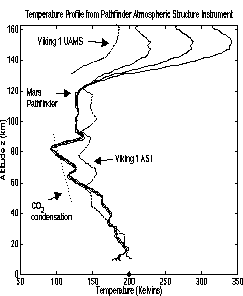Temperatures of the Martian atmosphere as deduced by Mars Pathfinder.
Click on image for full size
Courtesy of NASA.
Mars Atmospheric Temperature Profile, from Mars Pathfinder
The temperatures in the atmosphere of Mars are doggone cold! This is a graph which shows just what the temperatures are. The measurements were taken by Mars Pathfinder as it decended through the nighttime air and landed on the surface. The graph shows that where Pathfinder landed (at night), near the surface, the temperature was 170 oK (-150 F - brrrr). In the middle of the atmosphere the temperature got a lot colder, if that is possible, at 70 oK (-333 F)! Then, at the uppermost reaches of the atmosphere the temperatures got a lot warmer, becoming 150 to 300 oK (-190 to 80 F). These temperatures sound almost comfortable. This region of the atmosphere is called the ionosphere, or sometimes the exosphere. It is the region of the atmosphere closest to space, and is the one which is first exposed to the sun's rays.
You might also be interested in:
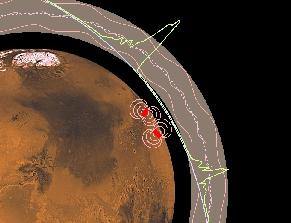
The Martian ionosphere is a layer of gas that is very high up above Mars. It extends from about 75 miles up to several hundred miles up above the surface. It is shown by the shaded region circling the
...more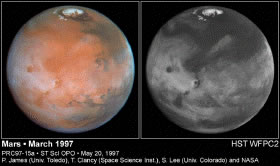
Unlike the Earth, where clouds are found around the entire globe, on Mars, clouds seem only to be found near the equator, as shown in this Hubble telescope image. This may be because water of Mars may
...more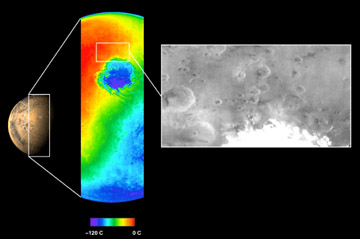
The Mars Odyssey was launched April 7, 2001. After a six-month journey, the Odyssey arrived at Mars on October 24, 2001. The instruments onboard the Mars Odyssey will study the minerals on the surface
...more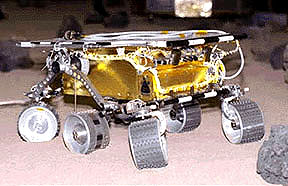
The Mars 2005 mission is still in the planning stages. It is set to launch in the year 2005.
...more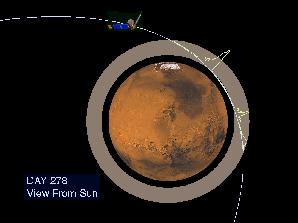
Aerobraking slowed the Mars Global Surveyor down when it reached Mars. Aerobraking also helped MGS to get into the right orbit for mapping the surface of Mars. Aerobraking means that the MGS flew through
...more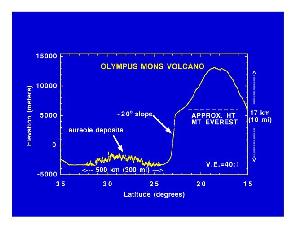
Mars Global Surveyor carries an instrument which measures the heights of things. This instrument is called an altimeter, or "altitude-meter". The graph to the left shows the results returned from Mars
...more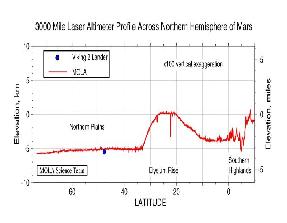
Mars Global Surveyor carries an instrument which measures the heights of things. The picture to the left shows Mars Global Surveyor's measurement of the size of the giant cliff which separates the southern
...more


